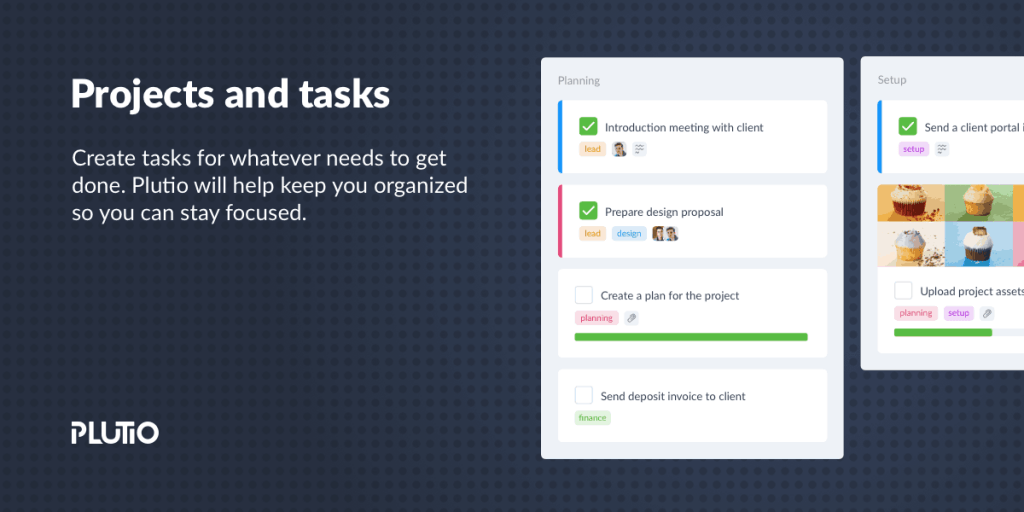When you start out in your new freelance business, one of the workflow systems that will grow your income is a tool to help you keep a clear overview. So in this article, I will show you which systems to choose from and what I consider productive project management tools for Web Designers and creative entrepreneurs.
Article Table of Contents
Why is a project management tool for Web Designers so important?
You could keep sketching and scribbling notes in your Moleskine book, but it’s risky. There are a bunch of productive project management tools available, but not all resources are effective.
I will enlighten you on a few very important facts as to why you need an app or tool to manage your customer’s creative work and projects.
- To keep reminders on what work you agreed to complete
- To clearly see progress on to-do’s, completed, and pending tasks
- To add relevant comments and files to tasks
- To clearly view what is pending a client’s response or others feedback
- To be able to go back in time to see what was done, said, and agreed upon
- To be able to track what NEW tasks are requested by the client
These are just a few of the most important features. When you add a project and all the to-do’s for a client to a project management system, you will reduce the time spent on each project. Overall, you will make fewer mistakes and eliminate double work due to clutter with what’s been done, added, changed, or agreed upon.
Often, through the creative and technical work for your customer, there will come a point where they will request a change for something. This has to be clearly stated by you and added to a separate list.
Why?
Because you will most likely add this as added work to your invoice or to a new invoice altogether.
I can guarantee that there WILL be confusion and time consuming problem-solving on various work details unless you keep a tight and streamlined workflow in a to-do app or project management tool.
Here are the options I recommend as client project management tools for Web Designers either starting out or those looking to improve and renew their workflows for current business.
1. Plutio – All productive project management tools in one
This is my number one and recommended freelance project management tool. Just a few weeks ago I moved my whole team over to Plutio, and we love it.
Before you consider starting with a free service, please sign up for a free trial of Plutio. What you get from them for the low price they ask is absolutely amazing.

You’re not just managing your customer projects and tasks in Plutio, you can also communicate with your team here (when you have one).
You can brand your Plutio account with your own freelance business name and logo and send out customer invoices using your branding. Your customers can pay the invoice straight from their email by clicking the link and choosing credit card or PayPal.
Project invoice proposals are built into the Plutio platform, so it’s easy to send prices and project agreements for signing with your customers.
Timesheets are included, so you can track your work time and add it to customers invoices. A calendar is also at your disposal, which you can use to show task dates, or content publish dates.
So to minimize the number of apps and tools you have to sign up for, you got it all in Plutio. The interface is very customizable and visual to give you a nice overview of your projects and task progress.
You will also get a good mobile app for Plutio to keep you updated while you’re away from your computer.
Note #2: For my business, instead of paying $16 monthly for FreeAgent to send my invoices, $29 monthly for Basecamp as a project management team, and an additional $37 monthly for Asana to manage my content, I now pay only $27 monthly using Plutio to cover it all!
Instead of the high cost of paying $82 per month, I’m saving $55 every month for Plutio… A tool I love even more than the other services.
2. Asana – Free project management tool that’s less visual
As you most likely read above, I have been using Asana as both a free and a paid account.
You sign up for Asana and use it completely free. The app is less visual than Plutio, and your tasks appear as a long list down a center column.
A few years back, I decided to move over to Basecamp for my Web Design and creative client work. When I switched, I brought my team over as well. They enjoyed Basecamp over Asana. And I was missing a more visual project overview, so I was content paying for Basecamp at that time.

But new and better tools are coming… And workflows and the joy of our daily routines can always improve. So like I said, I switched to Plutio.
If you’re looking to start out with paying nothing for a to-do app and project management system, Asana can be a great start. It’s a very well known app in the industry and they have a slick mobile app to stay updated on-the-go.
I recommend Asana for beginners as it’s simple and easy to use and can be used for free. It’s also an “industry standard” so Asana will support integration with other systems (like Zapier).
If you want more features in Asana, such as custom fields and other improvements, you will have to pay for it. Be aware that it can be costly if you want to add a few users.
You can sign up for Asana here.
3. Basecamp – Top of the game project management service
I like Basecamp, because it is more visual compared to Asana. It’s easy to use, and it’s available as both a desktop app and a mobile app. In my experience, it has been pleasant to work with, and I think you will feel the same.
You will have to pay to use Basecamp, so before you decide to try it out (instead of signing up for Plutio), let me share my reasons for why I moved away from Basecamp.

First, I found it expensive and it lacked a few key features that I needed. Second, I discovered that the Basecamp team did not create such a basic and necessary feature such as automatic recurring tasks!?
Also, I noticed that Basecamp does not have sub-tasks, which are totally necessary when working with a lot of details, projects and tasks like we do as Web Designers.
Basecamp is nice, and it has been around forever. They are considered the top, industry standard service for project and customer relationship management, but too many features are missing – features that I get and can customize by paying LESS with Plutio.
You can sign up for Basecamp here starting at $29 monthly.
Important insights to know when picking a Project Management system
Here are a few useful tips and important facts to keep in mind when you’re choosing a productivity tool to manage your projects and your business.
- Go for one that is an online (in browser) service, so you don’t need one specific app installed on one specific computer. A good online service will be cloud based and usually have a desktop and mobile app. This way, if your Windows computer explodes and your Android phone gets hacked, you got everything safely on your account, and it is easily accessible. You’re also not bound to stay with either a Mac or Windows operating system.
Plutio, Asana, and Basecamp are all good here. - Pick a system that includes subtasks, recurring tasks, and preferably, a system where you can set up your own custom fields. This way you can add and modify specific fields for your business and workflow, which is very useful.
Plutio has subtasks, recurring tasks, and custom fields included. Asana has subtasks and recurring tasks, but you need to pay for custom fields. Basecamp does not have subtasks, custom fields, or recurring tasks.
- Consider limiting the number of apps and tools you use. Instead of using and paying for three different services, try out Plutio as a beginner. In some cases, if you want an invoicing and accounting system in one, I would suggest WaveApps which is damn good and free.
I think I will end this article with this and not drag things out too much. You can figure out for yourself that there are endless apps, tools, services and platforms to choose from.
But, as I have mentioned before, I have used a lot of these systems and know what works and what does not. Of course, I will never be able to try them all.
The advice I gave you is for tools and apps that are popular and well known, which cover a lot of features, and can expand with you as you grow your online business.
Quick conclusion on recommended project management systems for Web Designers
I moved over to use Plutio.com for both myself and my team because it had so many of the features I have been looking for. It’s visually pleasant, it’s customizable, and most importantly I pay a lot less for ONE APP than what I used to do for three apps.
I recommend Plutio and by using THIS LINK you’ll get a lifetime discount when you sign up after your free trial. Make note of the discount code also and use it if you decide to sign-up for good.
Asana is great if you want to pay nothing and start out with a more sterile interface. There are a lot of things you can do to fit Asana into your workflow, but keep in mind – it’s less visual.
Basecamp is a little expensive and does not include the features I suggest you should have when working as a Web Designer, but try it out for a month (if you want).
What I want for you is to make sure you have good energy and a productive flow when building your new Web Designer business.



